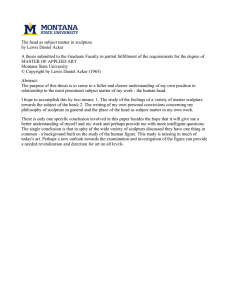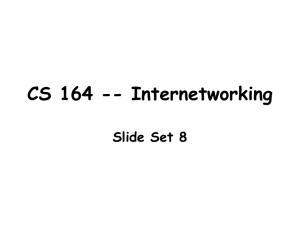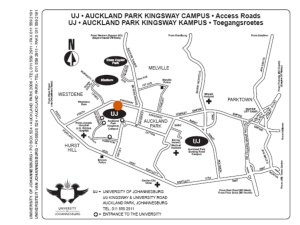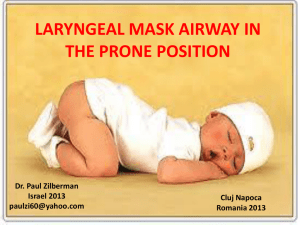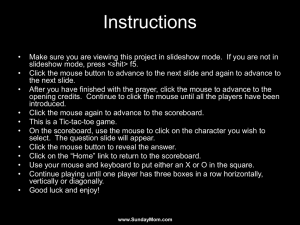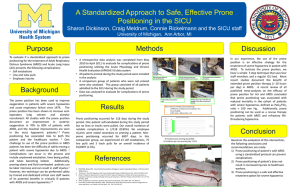*****************{B****************** **** ***A***A***B***B***B***B
advertisement
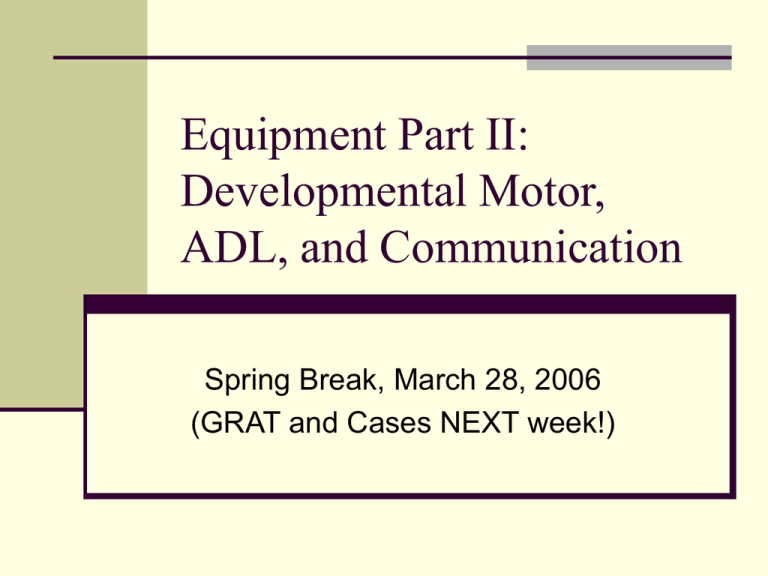
Equipment Part II: Developmental Motor, ADL, and Communication Spring Break, March 28, 2006 (GRAT and Cases NEXT week!) Crawl, Sit, Stand, Make Your Parents Childproof Your House Head up in prone – 3 months Wedge Sitting and postural reflexes – 6 months Bolster Corner Chair Crawl, creep Scooter board Crawlabout Early mobility Spatial Perception Normal limit setting Seated mobility not “normal” but so what? Caster cart and variants Standers Upright Prone Supine Adjustable Mobile Dynamic vs Static Weightbearing Need trays or use at tables Prone standers Facilitate trunk extension Require good head control Upright standers “Normal” position Commonly used for people with spina bifida Simpler design, lighter, less space needed Supine standers Maximum support, variable angle Tilt table Adjustable designs Easy Stand Magician Options for independent or powered lift Options for conversion to mobile Pediatric to Adult sizes Standing wheelchairs Power or manual http://www.usatechguide.org/itemreview.php?itemid=131 Walkers and Gait Trainers Wider base of support May have added supports and modifications for gripping ability Gait trainer implies more supports Weight, freedom of movement can vary Face front or reverse Should NOT be usable like baby walkers (slump and kick method) TRY out in therapy first whenever possible Designs Forward facing – visual support, folding Reverse – better LE extension, avoid LOL mode Add-on supports – abductor, pelvic stabilizer, arm troughs for poor grip or protecting joints !!!! Rifton style Uses “prompts” MOVE/conductive education philosophy Cricket/Pony style (prone support) Walking means… Community* Household* Exercise only Assisted only Device vs helper * RLA “Functional” classification ARJO Early rehab With enough help, anyone can “walk” at least a little Bone and joint development Limited evidence in PT literature for efficacy of static standing “Ballistic” weightbearing believed necessary for normal stimulus to bone mineralization / ossification Boys with Duchenne start losing bone before sitting down, documented in pre-steroid era No real evidence for bowel, bladder, respiratory benefits Prevent contracture, coxa valga, acetablular dysplasia (?) Bath equipment and lifts Car and bath transfers most difficult Weightbearing transfers ideal when feasible Assisted standing and walking get easier as child gets taller, not harder (vs. total lift) Lift equipment better strategy than chronic undernutrition Decide how much support needed in bath, recline vs back support Waiver may help with roll-in shower, use different equipment than regular tub/shower T.L.C. style Many options Overhead track lifts desired but rarely funded (CMS, Waiver) Will it fit? See also the Slider: http://www.adaptivemall.com/slidbatchair.html Going potty Not necessary to wait for walking and talking Support feet, trunk if needed, reduce size of hole to reduce fear of falling in ADLs - Eating Ataxia – bigger, heavier utensils Reduced dexterity – swivel and/or bent spoon Winsford feeders Cheek switch to scoop and present food Need some head control Hands-free Food preparation Cultural relevance Dressing, doors, reaching Miscellaneous gadgets Writing and typing Writing bird, typing stick (or use pencil eraser end down in cuff) Don’t underestimate two or even single finger typing Computer access Simple handwriting replacement – consider portable keyboard instead AlphaSmart QuickPad Voice recognition still improving Slower, hands free use possible Adaptive keyboards Smaller for weaker, less mobile hand use Larger for less accurate hand use Special ergonomic One-handed (software vs hardware) Alternative mouse access Motor, sensory, or cognitive issues Trackball or Mouse Keys for mouse if can see it Tactile mouse for blind person experimental Need keystroke navigation Screen reader – text to speech Magnification software, large monitors Voice rec. – speech to text Different correction strategy Scanning access – severe motor issues Low efficiency Compensate with word prediction AAC (Alternative – Augementative) Prerequisites vs Participation Interdisciplinary evaluation mandatory May Rx “therapy units as needed” Different choices for ambulatory vs not Verbal communication may increase Communicate more than basic needs to familiar caregivers May interface with computer Training and programming issues Literate English vs special language vs pictures Need for support The Strawberry Shake Story THE TOP TEN ADAPTED SLOGANS 10.OT- Function, Folks, and Fun 9. OT- You got the right one baby, uh-huh! 8. OT- When you care enough to have the very best 7. A.O.T.A.Membership has its privileges. 6. Male OTs- You've come a long way, baby. 5. _T- "I'd like to buy a vowel, Pat." 4. OT- Built for the human race. 3. OT- Real Therapy for Real People 2. OT- it does a body good. 1. OT- JUST DO IT!


